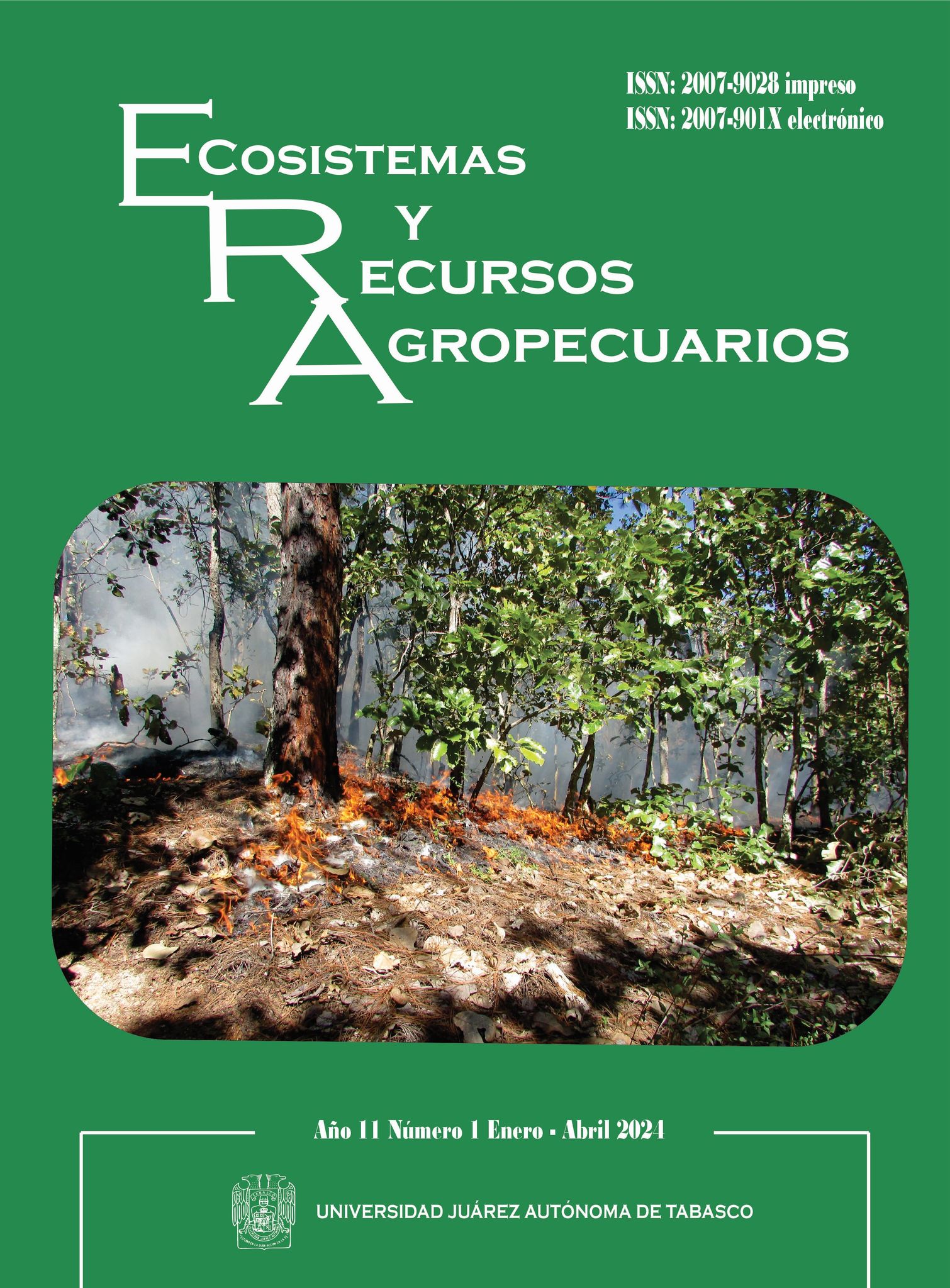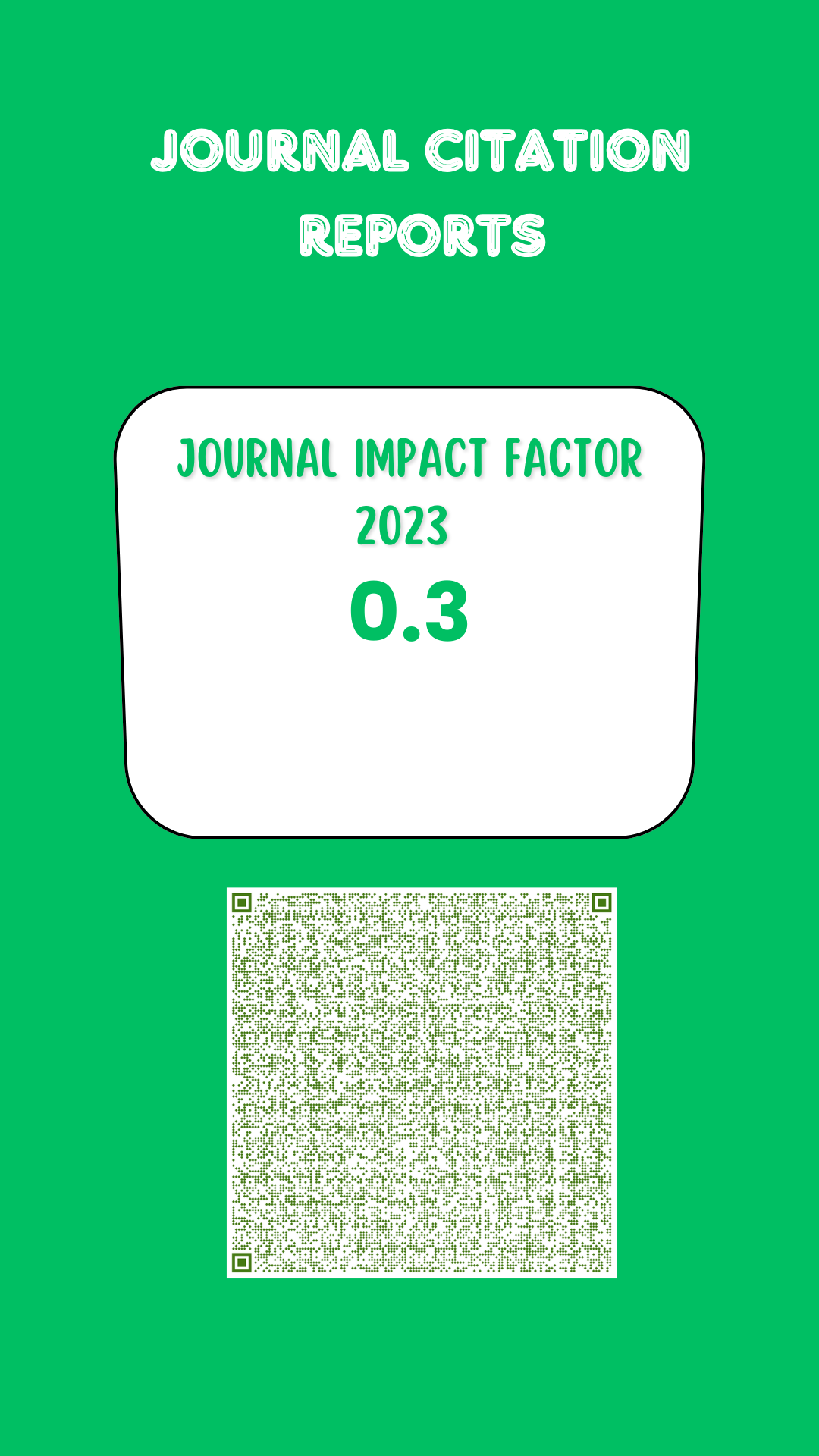Antagonismo y actividad antifúngica de Humphreya coffeata (Berk.) Steyaert contra Rhizopus stolonifer (Ehrenb.) Vuill.
DOI:
https://doi.org/10.19136/era.a11n1.3740Palabras clave:
Ascomycetes, Basidiomycetes, Control biológico, Fitopatógeno, Cocultivo, Pudrición blancaResumen
El hongo Rhizopus stolonifer causa pudrición de frutas y verduras, por lo que es importante la búsqueda de alternativas de control biológico. El objetivo fue realizar antagonismo y evaluar la actividad antifúngica de H. coffeata contra R. stolonifer. Se evaluó el porcentaje de reducción del crecimiento micelial (PRCM) y el tipo de antagonismo de R. stolonifer al crecerlo junto con las cepas antagonistas y se evaluó la actividad antifúngica del caldo de cultivo de H. coffeata. El PRCM fue mayor para H. coffeata y Daldinia sp., presentaron antagonismo de clase 1, inhibición por contacto, ya que el micelio de H. coffeata enrolló las hifas de R. stolonifer. Los tres caldos de cultivo de H. coffeata presentaron efecto sobre el crecimiento de R. stolonifer, pero, fue más evidente en el cocultivo, por lo que mediante este sistema se puede obtener moléculas para utilizarse en el bio-control de R. stolonifer.
Descargas
Referencias
Acosta-Urdapilleta MDL, Téllez-Téllez M, Villegas E, Estrada A, Díaz-Godínez G (2016) Caracterización de cinco especies de Pleurotus crecidas en cuatro medios de cultivo. Mexican Journal of Biotechnology 1: 1-11.
Alves JM, Ferreira CFR, Dias J. Teixeira V, Martins A, Pintado M (2013) A review on antifungal activity of mushroom (basidiomycetes) extracts and isolated compounds. Current Topics in Medicinal Chemistry 13(21): 2648-2659.
Badalyan SM, Garibyan NG, Innocenti G (2002) Antagonistic activity of xylotrophic mushrooms against pathogenic fungi of cereals in dual culture. Phytopathologia Mediterranea 41: 200-225.
Badalyan SM, Garibyan NG, Innocenti G (2004) Interactions between xylotrophic mushrooms and mycoparasitic fungi in dual-culture experiments. Phytopathologia Mediterranea 43: 44-48.
Batool F, Sarwar S, Jabeen K, Shafiq T, Khalid AN (2019) Assessment of antifungal activity of some boletes mushrooms found in Himalayan range of Pakistan against some fungi. Pure and Applied Biology (PAB) 8(4): 2257-2261.
Bautista-Baños S, Bosquez-Molina E, Barrera-Necha LL (2014) Rhizopus stolonifer (soft rot). In: Bautista-Baños S (eds) Postharvest decay. Academic Press. pp: 1-44.
Bell DK, Wells HD, Markham CR (1982) In vitro antagonism of Trichoderma species against six fungal plant pathogens. Phytopathology 72: 379-382. https://doi.org/10.1094/Phyto-72-379.
Berovič M, Habijanič J, Zore I, Wraber B, Hodžar D, Boh B, Pohleven F (2003) Submerged cultivation of Ganoderma lucidum biomass and immunostimulatory effects of fungal polysaccharides. Journal of Biotechnology 103: 77-86. https://doi.org/10.1016/S0168-1656(03)00069-5.
Boddy L (2000) Interspecific combative interactions between wood-decaying basidiomycetes. FEMS Microbiology Ecology 31(3): 185-194. https://doi.org/10.1111/j.1574-6941.2000.tb00683.x.
Chandrashekara KN, Manivannan S, Chandrashekara C, Chakravarthi M (2012) Biological control of plant diseases. In: Singh VK, Singh Y, Singh A (eds) Eco-friendly innovative approaches in plant disease management International. Book Distributors and Publisher. New Delhi. pp. 147-166.
Cuevas MJA (2016) Los hongos: Héroes y villanos de la prosperidad humana. Revista Digital Universitaria 17: 2-10.
Dar GH, Beig MA, Ahanger FA, Ganai NA, Ahangar MA (2011) Management of root rot caused by Rhizoctonia solani and Fusarium oxysporum in blue pine (Pinus wallichiana) through use of fungal antagonists. Asian Journal of Plant Pathology 5(2): 62-67.
Ezziyyani M, Sánchez CP, Ahmed AS, Requena ME, Castillo MEC (2004) Trichoderma harzianum como biofungicida para el biocontrol de Phytophthora capsici en plantas de pimiento (Capsicum annuum L.). Anales de Biología 26: 35-45.
FAO (2022) Tackling food loss and waste: A triple win opportunity 2022. FAO. Roma. https://www.fao.org/newsroom/detail/FAO-UNEP-agriculture-environment-food-loss-waste-day-2022. Fecha de consulta: 22 de diciembre de 2022.
Goers L, Freemont P, Polizzi KM (2014) Co-culture systems and technologies: taking synthetic biology to the next level. Journal of The Royal Society Interface 11(96): 20140065. https://doi.org/10.1098/rsif.2014.0065.
Guédez C, Cañizález L, Castillo C, Olivar R (2009) Efecto antagónico de Trichoderma harzianum sobre algunos hongos patógenos postcosecha de la fresa (Fragaria spp.). Revista de la Sociedad Venezolana de Microbiología 29: 34-38.
Howell CR (2003) Mechanisms employed by Trichoderma species in the biological control of plant diseases. The history and evolution of current concepts. Plant Disease 87: 4-10. https://www.doi.org/10.1094/PDIS.2003.87.1.4.
Janisiewicz WJ, Korsten L (2002) Biological control of postharvest diseases of fruits. Annual Review of Phytopathology 40: 411-441. https://doi.org/10.1146/annurev.phyto.40.120401.130158.
Khalid S, Naseer A, Shahid M, Shah GM, Ullah MI, Waqar A, Abbas T, Rehman F (2019) Assessment of nutritional loss with food waste and factors governing this waste at household level in Pakistan. Journal of cleaner production 206: 1015-1024. https://doi.org/10.1016/j.jclepro.2018.09.138.
Lee YS, Kim J, Shin SC, Lee SG, Park IK (2008) Antifungal activity of Myrtaceae essential oils and their components against three phytopathogenic fungi. Flavour and Fragrance Journal 23(1): 23-28. https://doi.org/10.1002/ffj.1850.
Michel-Aceves AC, Hernández-Morales J, Toledo-Aguilar R, Sabino López JE, Romero-Rosales T (2019) Capacidad antagónica de Trichoderma spp. nativa contra Phytophthora parasitica y Fusarium oxysporum aislados de cultivos de jamaica. Revista Fitotecnia Mexicana 42: 235-241.
Moody SC (2014) Microbial co-culture: harnessing intermicrobial signaling for the production of novel antimicrobials. Future Microbiology 9(5): 575-578. https://doi.org/10.2217/fmb.14.25.
Mutlag NH, Sadeq MA, Hussein AM, Rasim H (2018) Assessment of the effect of autoclaving of Pleurotus ostreatus filtrate on its pathogenicity and antagonistic ability. Biochemical and Cellular Archives 18: 2095-2099.
Netzker T, Fischer J, Weber J, Mattern DJ, König CC, Valiante V, Schroeckh V, Brakhage AA (2015) Microbial communication leading to the activation of silent fungal secondary metabolite gene clusters. Frontiers in Microbiology 6: 299. https://doi.org/10.3389/fmicb.2015.00299.
Poucheret P, Fons F, Rapior S (2006) Biological and pharmacological activity of higher fungi: 20-year retrospective analysis. Cryptogamie Mycologie 27(4): 311.
Rayner ADM, Webber JF (1984) Interspecific mycelial interactions- an overview. Symposium series-British Mycological Society: 383-417.
Riddell RW (1950) Permanent stained mycological preparations obtained by slide culture. Mycologia 42: 265-270. https://doi.org/10.2307/3755439.
Sánchez JE, Royse D (2001) La biología y el cultivo de Pleurotus spp. 1a Edición. Editorial UTEHA Noriega. México. 293p.
Savoie JM, Mata G, Mamoun M (2001) Variability in brown line formation and extracellular laccase production during interaction between white-rot basidiomycetes and Trichoderma harzianum biotype Th2. Mycologia 93(2): 243-248. https://doi.org/10.2307/3761644.
Singh J, Mirza A, Kaur S, Arya SK, Singh G (2023) Application of microbial antagonists for the preservation of fruits: An effective strategy to inhibit the postharvest disease. Relationship Between Microbes and the Environment for Sustainable Ecosystem Services 3: 261-288. https://doi.org/10.1016/B978-0-323-89936-9.00018-7.
Thambugala KM, Daranagama DA, Phillips AJ, Kannangara SD, Promputtha I (2020) Fungi vs. fungi in biocontrol: An overview of fungal antagonists applied against fungal plant pathogens. Frontiers in Cellular and Infection Microbiology 10. https://doi.org/10.3389/fcimb.2020.604923.
Uc-Arguelles AK, Pérez-Moreno J, Ayala-Escobar V, Zavaleta-Mejía E (2017) Antagonism of Saccharicola sp. against phytopathogens of the root of jalapeno pepper (Capsicum annuum). Revista Mexicana de Fitopatología 35: 263-283. https://doi.org/10.18781/r.mex.fit.1611-6.
Xu S, Li M, Hu Z, Shao Y, Ying J, Zhang H (2023) The potential use of fungal co-culture strategy for discovery of new secondary metabolites. Microorganisms 11(2): 464. https://doi.org/10.3390/microorganisms11020464.
Yamaç M, Bilgili F (2006) Antimicrobial activities of fruit bodies and/or mycelial cultures of some mushroom isolates. Pharmaceutical Biology 44(9): 660-667. https://doi.org/10.1080/13880200601006897.
Zhang X, Li B, Zhang Z, Chen Y, Tian S (2020) Antagonistic yeasts: A promising alternative to chemical fungicides for controlling postharvest decay of fruit. Journal of fungi 6(3): 158. https://doi.org/10.3390/jof6030158.
Descargas
Publicado
Número
Sección
Licencia
Derechos de autor 2024 Ecosistemas y Recursos Agropecuarios

Esta obra está bajo una licencia internacional Creative Commons Atribución-NoComercial-CompartirIgual 4.0.
1. Política propuesta para revistas de acceso abierto
Los autores/as que publiquen en esta revista aceptan las siguientes condiciones:
1. Los autores/as conservan los derechos de autor y ceden a la revista el derecho de la primera publicación, con el trabajo registrado con la licencia internacional Creative Commons Reconocimiento-No comercial-Compartir igual 4.0 .de atribución de Creative Commons, que permite a terceros utilizar lo publicado siempre que mencionen la autoría del trabajo y a la primera publicación en esta revista.
2. Los autores/as pueden realizar otros acuerdos contractuales independientes y adicionales para la distribución no exclusiva de la versión del artículo publicado en esta revista (p. ej., incluirlo en un repositorio institucional o publicarlo en un libro) siempre que indiquen claramente que el trabajo se publicó por primera vez en esta revista.
3. Se permite y recomienda a los autores/as a publicar su trabajo en Internet (por ejemplo en páginas institucionales o personales) antes y durante el proceso de revisión y publicación, ya que puede conducir a intercambios productivos y a una mayor y más rápida difusión del trabajo publicado (vea The Effect of Open Access).

Este trabajo está sujeto a una licencia internacional Creative Commons Reconocimiento-No comercial-Compartir igual 4.0 .



